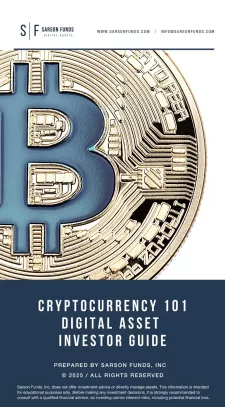
The DePIN (Decentralized Physical Infrastructure Networks) sector in crypto is making significant strides in disrupting expensive and inefficient practices prevalent in traditional physical infrastructure. This sector, spearheaded by innovative projects like Helium and its subDAOs, Hivemapper, Render Network, and DIMO, is reshaping how infrastructure is built, maintained, and monetized. These initiatives are not just technological advancements; they represent a fundamental shift towards more scalable, cost-effective, and democratic systems on blockchains that have scalable features to ensure that low cost is a maintained priority for usage.
Disrupting Traditional Models: Helium and Its SubDAOs – $HNT, MOBILE, and IOT
Helium has emerged as a trailblazer in the DePIN sector, challenging conventional telecommunications models with its decentralized wireless network. By incentivizing individuals to operate hotspots, Helium drastically reduces the costs associated with network expansion and maintenance. This has been made possible on Solana, with their low fees and immense data throughput. This approach is further diversified through its subDAOs, which address the separate Helium offerings, 5G, and IOT networks. These subDAOs disrupt traditional, centralized models by decentralizing control and spreading infrastructure costs among a wider base of participants and allowing a balance to be found within the supply and demand of the community alongside the SubDAO token compositions.
Democratizing Mapping Data with Hivemapper – $HONEY
Hivemapper exemplifies disruption in the mapping industry, traditionally dominated by a few major players. By incentivizing individuals to contribute real-time street-level imagery, Hivemapper is breaking down the monopolies in map data provision. This democratization reduces the costs associated with map data collection and maintenance, ensuring more accurate and up-to-date information is available at a fraction of the traditional cost. All while creating a sustainable incentive system through their weekly token distribution program built on Solana, allowing for scalability and low fees to be a non-issue. The growth of the Hivemapper network has been explosive and has continued thus far in the new year.
The Render Network: Revolutionizing Digital Rendering – $RENDER
The Render Network addresses the high costs and inefficiencies in digital image and video rendering. By distributing rendering tasks across a decentralized network, Render significantly lowers the barriers to high-quality digital content creation. This model not only makes rendering more accessible but also disrupts the traditional, costly rendering farm model, leading to more scalable and cost-effective digital content production. This, while the RNDR token itself is being migrated to Solana, will ensure cheap access to the network. This will be an ever-evolving narrative in the technology sector as traditional rendering costs continue to increase, while the demand for these services increases even further. Midjourney, Stability AI, and other AI companies are working in tandem with Render to ensure that cheap rendering power is open to all.
DIMO: Transforming the Automotive Data Landscape – $DIMO
DIMO is set to revolutionize the automotive industry by creating a decentralize network for consumer values vehicle data. This approach challenges the expensive and centralized models of data collection and distribution in the automotive sector. By enabling vehicle owners to share and monetize their data, DIMO reduces dependency on costly centralized systems and provides a scalable, user-driven alternative that can be opted into, and used at your own discretion. This system has shown promise with their 2 devices on the market, and a surge in usage. This particular project has chosen to build on the Polygon network rather than Solana, but with the same priority in mind, scalability.
Scaling the Future with DePIN
The impact of the DePIN sector in scaling the future of physical infrastructure cannot be overstated. These networks offer scalable solutions to traditionally expensive and centralized systems. By leveraging blockchain technology, DePIN projects are not only reducing costs but also enabling greater participation and innovation through token incentives. This democratization of infrastructure represents a seismic shift in how physical networks are being build and manage.
The future of physical infrastructure, as shaped by the DePIN sector, promises to be more inclusive, efficient, and adaptable. Sample projects are Helium, Hivemapper, Render, and DIMO. They are at the forefront of this transformation which demonstrates the vast potential of decentralized networks. As these projects continue to grow and evolve, they are set to play a crucial role in shaping a more sustainable and scalable infrastructure landscape.
In summary, the DePIN sector is at the vanguard of revolutionizing physical infrastructure. By disrupting and democratizing, these networks redefine infrastructure, making it more scalable, cost-effective, and accessible. This shift signals a fundamental change in how we approach and manage the development of infrastructure. Innovations from Helium, Hivemapper, Render Network, and DIMO extend beyond their domains, pointing to the transformative potential of decentralized systems in reshaping infrastructure. These projects serve as trailblazers, illustrating the broader impact and possibilities of decentralized approaches to infrastructure development. As we move forward, the influence of DePIN in creating a more efficient and equitable infrastructure ecosystem will undoubtedly continue to grow. This marks a new era in the intersection of technology and physical infrastructure.
Disclosures: Not investment advice. The Author, Sarson Funds, Inc. and its affiliated managers may hold positions in the projects mentioned. Talk with your financial advisor before making any investment decisions or have them contact Sarson Funds directly at [email protected].








